#celtic paganism
Text
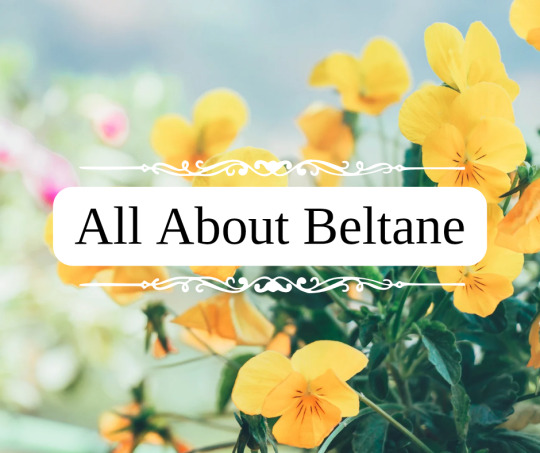
All About Beltane
Beltane, also known as Bealtaine in Irish, is a Gaelic holiday traditionally held on May 1st or the halfway point between the spring equinox and the summer solstice. It is believed to be named after the Celtic sun god Belenus. It was widely observed in Ireland, Scotland, and the Isle Of Man, and is one of the 4 major Celtic fire festivals. It is mentioned in even the earliest Irish literature and marked the beginning of summer and used as the marker to drive cattle into their summer pastures. Although public celebrations have mostly fallen out after the 20th century and many traditions have been mixed with other cultural holidays (such as the Roman holiday May Day), many Celtic Neopagans and Wiccans still celebrate, and many local traditions still continue, causing it to now get a cultural revival.
Traditionally, rituals were held to protect the livestock that moved pastures, along with crops, dairy products, and people, and to encourage growth. It was also important to appease the Aos Sí, or nature spirits/fairies, which were believed to be more active then.
According to early medieval texts in 908, druids would make two bonfires and drive cattle between them to protect them from disease. In the 18th and 19th centuries, bonfires continued to be an important part of the celebrations. Before the bonfires were lit, all hearth fires were put out, and then relit using the fire from the Beltane bonfires after the celebration.
Continuing into the 19th century, cattle were still driven over or between flames, or sometimes around the fires or made to leap over. The people themselves did as well for good luck and protection. Once the fires died down, people would dab themselves with the ashes and sprinkle them over their crops and livestock. Torches from the bonfires would also be brought home and carried around the home or boundaries, and also used to relight the hearth.
Food was also an important part of the Beltane festival, and usually included a feast of lamb, which, historically, was sacrificed. In 1769, it was written that a hot drink, called a caudle, made of eggs, butter, oatmeal, and milk was served, along with tossing a bit on the ground as an offering. A Beltane Bannock, a type of oatmeal cake, was also written to be important and had a few traditions around it.
In one tradition, the Beltane Bannock had nine knobs on it and each person would take the bannock and face the fire, proceeding to break off the knobs of bannock one at a time and tossing them behind their shoulder as an offering to the spirits for protection over their livestock and from predators (one for the cow, one for the sheep, one for the fox, etc). Afterwards, they would drink the caudle.
According to other 18th century writers, there was another Beltane Bannock tradition where the bannock would be cut into slices and one was marked with charcoal. The slices were then thrown into a bonnet and everyone would take one out while blindfolded. According to one writer, whoever pulled the marked bannock slice had to leap through the fire 3 times. According to another, the person would instead be pretend-thrown into the fire and for some time afterward people would talk about the person as if they were dead. This may have always been symbolic, or it may have been a tradition from a time where actual human sacrifice was used. This tradition was also near identical to May Day traditions that occurred in Wales and other parts of Europe, however.
Other traditions including flowers and plants were also observed, especially ones that evoked fire. Documents from the 19th century cite that yellow and white flowers, such as primrose, rowan, hawthorn, gorse, hazel, and marsh marigold was used and placed at doorways and windows. Sometimes they were strewn into garland, and other times they were made into bouquets, made into crosses, or fastened to them. They were also fastened to cows and milking/butter equipment.
Decorating a May Bush or May Bough was also a widespread tradition, and it usually consisted of a small tree or branch (typically hawthorn, rowan, holly, or sycamore) decorated with bright flowers, ribbons, candles, painted shells or egg shells from Easter, and more. In some traditions they also decorated it with gold and silver May Balls, which were hurling balls, that were then either given out to children or gifted to winners of a hurling match. It was also known as the only acceptable time to cut a thorn tree, as they were associated with fairies and may have also been a relic of worshipping tree spirits. It would either be decorated where it grew, or branches hung over windows, doors, roofs, and barns either inside or outside. Traditionally, it was the responsibility of the eldest of the house to decorate it.
The tree was usually left up until May 31st, but in some traditions it would be burned in the festival bonfire after singing and dancing around it. In Dublin and Belfast, May Bushes were brought into town and decorated by the whole neighborhood, with each neighborhood competing for the most beautiful bush. These competitions could also lead to neighborhoods attempting to steal others May Bushes, which eventually led to the May Bush being outlawed in Victorian times.
Appeasing the fairies was also a big part in Beltane celebrations, with many traditions revolving around offerings to the fairies and also warding them off, as there were many fears around them stealing dairy. One protection tradition was to leave 3 black coals under the butter churn. Another was to hang May Boughs on the milk pails. And yet another was to hang cattle tails in the barns. Flowers were also used to decorate the cattle's horns for good luck.
Farmers would also lead a procession around the boundaries of the farm and would "carry with them seeds of grain, implements of husbandry, the first well water, and the herb vervain (or rowan)", stopping at the four cardinal points of direction starting at the east, and performing rituals towards each direction at each stop. These processions were said to bring protection of their farm produce and encourage fertility. Some people also made the sign of the cross using milk on the backside of cattle for good luck.
As for fairy offerings, one tradition was to pour milk or leave food at places associated with the fairies such as "fairy trees". In Ireland, cattle were brought to "fairy forts" where a small amount of their blood was poured into the earth with prayers of the herd's safety. Sometimes, the blood would be left to dry and then be burnt.
Visiting holy wells was also a popular way to celebrate Beltane. Visitors would walk sunwise, moving from east to west, around the well while praying for health. They would then leave offerings of coins or cloth. The first water drawn from the well on Beltane was thought to be especially potent, and would bring good luck to the person who drew it.
Morning dew on Beltane was also thought to bring goodluck and health, and maidens would wash their face with it or roll in it at dawn or before sunrise on Beltane. It was also collected in a jar, left in sunlight, and then filtered. The dew was said to increase sexual attractiveness, maintain youthfulness, protect from sun damage, and ensure skin health during the ensuing year.
Modern day celebrations may vary from these more traditional festival activities, but many choose to incorporate or take inspiration from the traditions at least. Popular traditions still revolve around bonfires, feasts, decorating a May Bush, and focusing on protection and growth.
Beltane Associations
Colors - yellow, white, red, green
Food - lamb, milk and dairy, beef, bannocks, caudle, cakes
Animals - cattle, sheep, other herd animals
Items - primrose, rowan, hawthorn, gorse, hazel, marsh marigold, holly, sycamore, yellow and white flowers, flower garland, greenery, morning dew, dairy products
Crystals - citrine, fire agate, fire opal, carnelian, red and yellow jasper
Other - protection, fertility, good luck, fire, smoke, ash, sun, bonfires, farming
Ways To Celebrate
light a bonfire
jump over or dance around a bonfire
decorate a May Bush or May Bough
craft and hang flower garland
bake Beltane Bannocks
collect morning dew
create some caudle
ward and protect your home or property
leave offerings for the fairies
focus on protection, growth, and luck magic
enjoy time in the sun
have a feast
create a bouquet out of yellow and white flowers
visit a farm or petting zoo
#beltane#beltaine#bealtaine#celtic#gaelic#irish#scottish#pagan#witch#witchy#wicca#may day#magick#magic#magickal#grimoire#tradition#celebrate#bonfire#fire festival#witchcraft#spiritual#witchblr#witch community#paganism#pagan witch#celtic paganism#paganblr#about#dairy
24 notes
·
View notes
Text
Some topics + prompts for your grimoire or book of shadows
books you want to read
local folklore / mythology / legends
the wheel of the year
plants you have in your house or garden (their care, properties, uses, draw them etc)
theban alphabet
days of the week and their correspondences
write about a deity you worship / are drawn to
draw art for / of a deity you worship or are drawn to
colour magic
the elements
write about the crystals you own (draw them, write their properties, correspondences, uses, how it makes you feel etc)
how to make your own crystals
your birth chart
your sun, moon and rising sign
natural medicine (as a chronically ill witch I love natural medicine NOT AS A SUBSTITUTE FOR PRESCRIPTIONS! for example I take all my prescription meds and then if I'm having period pain I might drink some raspberry leaf tea)
positive affirmations / mantras that you connect with
how to manifest
history of witches
deities in a certain pantheon you're interested in or drawn to
write about a spell you've done (how you did it, why you did it, how you felt, the results of it, what you would change if you did the spell again etc)
chakras
write about a dream you've had
tarot reading tricks and tips
moon phases
sabbats
zodiac signs
family tree
poetry / songs / quotes you connect to (i like to find ones that make me feel powerful or witchy, or remind me of certain aspects of my practice. a song i like for this is rhiannon by fleetwood mac and i'm going to post more things like this regularly on my page)
feathers and their meanings
simple everyday magic
recipes
some ideas for the next sabbat you plan to celebrate
tarot spreads you like
write about a tarot reading you've done (any prep you did, the deck you used, the cards you pulled, your personal interpretation of the cards based on the art and how you feel, the meaning of the cards, how the cards relate to the questions you asked, final reflection on how you feel the reading went)
interesting mythology
tree of life
glamour magic
money bowls
crystal shapes and their meanings
grounding techniques
cleansing
protection
banishing
cord cutting spells
essential oils
types of divination
planets and their correspondences
angel numbers
witchy wishlist
go to supplies and ingredients (herbs and things that you use regularly)
favourite crystals
working with your inner child
if you've had a really good or particularly insightful meditation session it can be nice to either draw or write what happened and how you felt during it
witchy arts and crafts and diys you want to do
altar ideas
read a witchy book / watch a witchy video and take notes
write about your ancestors
witchy things to incorporate into your daily routine
what is a tower moment
witchy reset / self care days
the history of the area you live in
veiling
how to make your own incense sticks
shadow work
shadow work prompts
ok, that's all the ideas I have for now and I hope that helps someone! I'll be posting some pages from my grimoire and some more prompt / topic ideas in the near future which I'm really excited for.
P.S. please remember that everyone's practice is their own and you should do what feels right to you while respecting that other people have their own beliefs (as long as they're not hateful).
#grimoire#booksofshadows#witch#pagan#paganism#celtic paganism#journalling#creativity#art#art journal#journal#welsh witch#witchcraft#witch tips#grimoire ideas#grimoire prompts#shadow work#bookofshadowsprompts
2K notes
·
View notes
Text
Sometimes I approach my shrines and just sort of stand there. Like, I don't pray, make offerings, or anything. I'll just stand there and look at it. Or sit next to it.
For a while, this made me feel strange and a little guilty, even. But now I look to how I do similarly with my parents. I'll just go and sit quietly with them, or go lean on them. Just take comfort in their presence.
The Gods ARE our divine parents, after all.
#hellenic deities#hellenic polytheism#pagan#hellenismos#greek polytheism#hellenic gods#altar#irish paganism#polytheism#irish mythology#celtic paganism#celtic polytheism
460 notes
·
View notes
Text
The Structure of a Pagan Prayer
When appealing to a deity or making an offering, it’s wise to know how this was traditionally done in the past so you can be as respectful as possible and build a true reciprocity with the gods. This type of prayer structure is found in all manner of pagan religions from Norse paganism, Hellenic (Greek) polytheism, Kemetic (Egyptian) prayer and so on. I got the inspiration and much of the information here from @Ocean Keltoi on Youtube who is a fantastic scholar and Norse heathen who actively stands against prejudice and is all around a wonderful resource.

Now, there are three main elements of a pagan prayer, which should be done in this order:
1. The Invocation. This is where you call upon the specific god you’re hoping to connect with. Think of it as writing the name and address on your letter to the Gods - it lets the deity know that this prayer is directed at them, which is important in a polytheistic religion with many gods. To start your invocation, address the deity directly by name, or use an epithet or kenning that they're known by. It's especially wise to choose an epithet that relates to what you're praying for, like using one of Apollo's healer epithets while addressing him in a prayer about a loved one's sickness, for instance. It’s also a good idea to praise them highly and with a certain air of reverence. These are ancient deities after all.
2. The Argument. Here you give your reasons for why a deity should fulfill your request and favor you. If you’ve brought offerings, cite them here. You can also include reasons for why you’re reaching out, such as love in a prayer for Aphrodite or matters of justice with the god Tyr. This is where you make your case to them. And if you’re reaching out to a deity you don’t have a working relationship with, which let’s be honest will be the case many more times than we’d like, then you can tell them this here also. A good example might be “Oh Tyr, one-handed war god and son of Odin, though we have not met before I have heard your name and been called to it…”
3. The Request. Finally you ask the gods to look kindly on your request and to grant you their blessing. Again, be as respectful and reverent as possible towards them.
Prayer Example: “Grey-eyed Athena, daughter of thundering Zeus, if ever I have poured out sweet wine for you, look kindly on me and grant me your wisdom.”

How to stand when making the prayer
This depends on which God you’re reaching out to and, of course, your own personal comfort. The most common ways of praying are to stand and perform some gesture of reverence, kneel while praying and even prostrate, kneeling fully on the ground with your head down as you appeal to the gods. Some might also choose to wear veils when performing prayers or rituals for deities, though this is naturally up to the individual.
In Hellenic tradition, if you’re praying to an Ouranic god (deities of the heavens) you would traditionally wear your hair up and stand with your arms raised to the heavens while reciting your prayer. Meanwhile, if you are praying to a Chthonic god (deities of the underworld), you would kneel and face downwards towards the Earth with your hair flowing freely.
Some Norse sources tell of ancient pagans prostrating before the gods, and yet this is still not entirely necessary. Pray however you see fit and what is most comfortable for you at the moment.
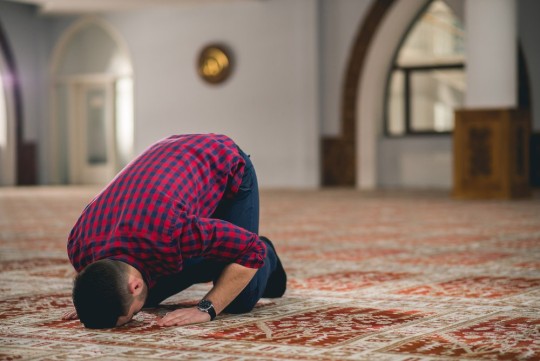
^ This is what prostrating looks like
Sources:
Ocean Keltoi's video on pagan prayers
Hearth and Fire Work's blog post on Hellenic prayer structure
#witchblr#witchcraft#witch tips#deity work#paganism#pagan#polytheism#hellenic pagan#hellenic paganism#hellenic polytheism#norse pagan#norse heathen#norse paganism#heathenry#kemetic paganism#kemetic pagan#celtic pagan#celtic paganism#spirit work
891 notes
·
View notes
Text
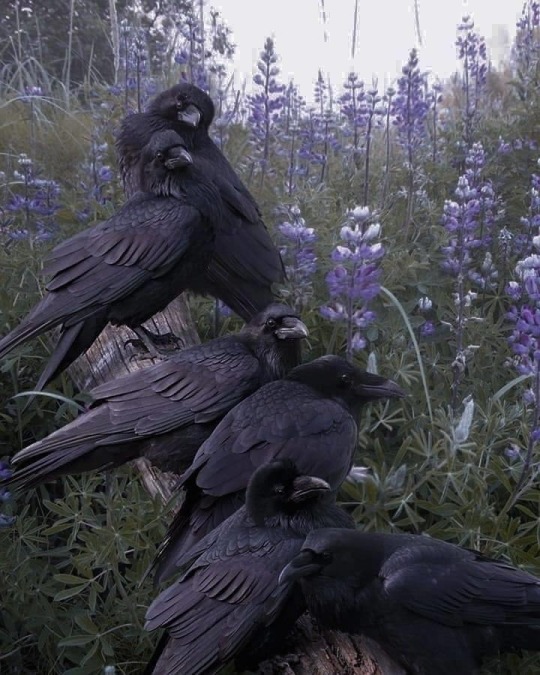

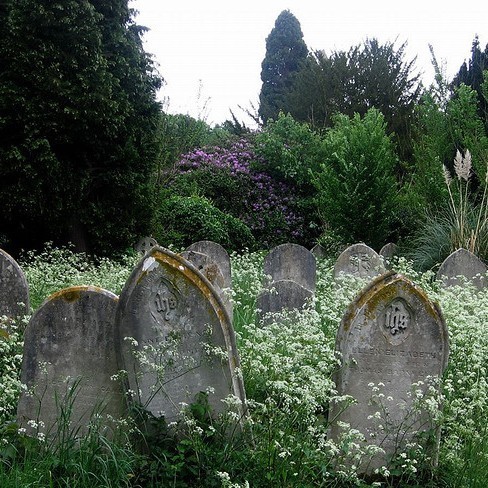
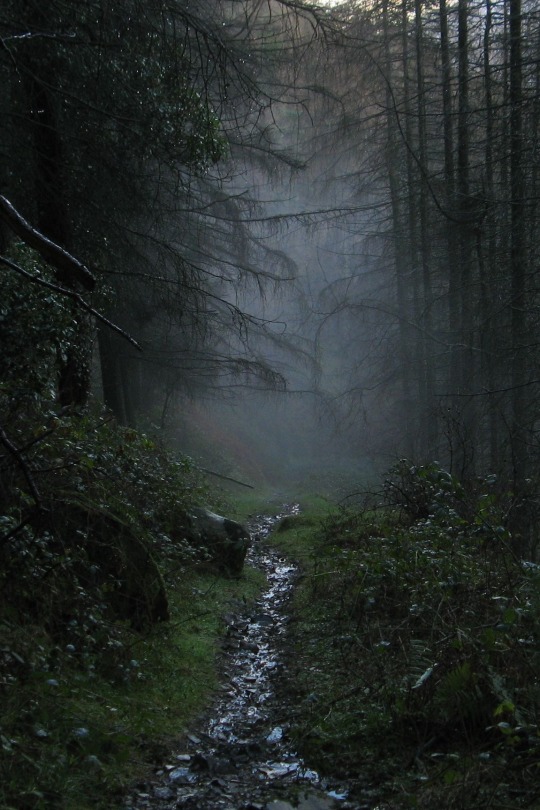
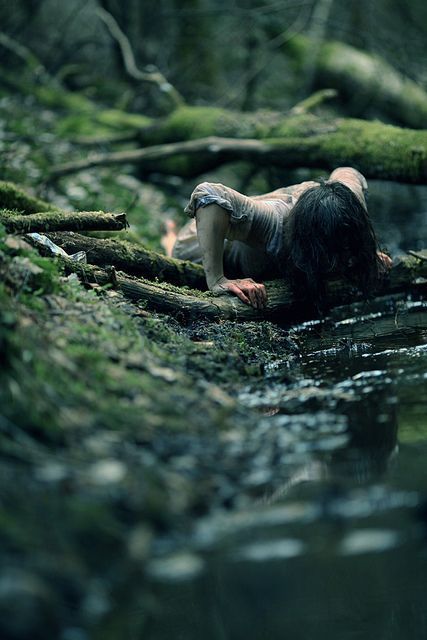
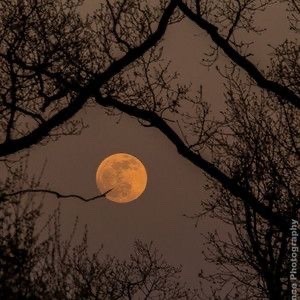
E-offering to Lady Morrigan
#celtic paganism#paganism#pagan#pagan witch#paganblr#witchcraft#witch#witchblr#celtic#morrigan#deity worship#deity devotion#deity
886 notes
·
View notes
Text
𓃶 What Is The Wild Hunt?
The Wild Hunt is a common belief among many Northern European cultures. In short, the hunt is a cavalcade of ghosts, spirits, fairies, elves, and other spiritual beings that is said to sweep across our world every year. Depending on where your beliefs come from, when it happens will differ.
It is commonly believed that the leader of The Wild Hunt is a deity or figure of importance of some kind, such as Odin/Woden in Norse and Saxon traditions, or King Arthur in British lore. Other leaders of the hunt include but are not limited to:
𖤓 Arawn or Gwyn ap Nudd, commonly seen as the Welsh lords of Annwn
𖤓 Danish king Valdemar Atterdag
𖤓 The Norse dragon slayer Sigurd
𖤓 Biblical figures like Cain, Gabriel, Herod and the devil
𖤓 Gothic king Theodoric the Great
☾༺♰༻☽
𓃶 What Did People Do For The Wild Hunt?
The Wild Hunt was generally seen as a bad omen; one for destruction, famine, war, plague, or the death of the one who saw it. In many traditions, witnessing the hunt would result in the viewer being abducted to Otherworld or Underworld. Other times, those who were not protected would have their souls pulled from their bodies while they sleep, and they would join the menagerie of the dead.
To avoid this fate, people in Wales, for example, began the tradition of carving pumpkins as a way to avoid being taken by the fae. In Scandinavia, offerings like bread were put outside the home as an offering to the spirits joining Odin for the hunt.
☾༺♰༻☽
𓃶 When is The Wild Hunt?
Depending on where your beliefs stem from, there are various answers to this question.
In Britain, The Wild Hunt is associated with the autumn season, specifically around and on Samhain/The Autumn Equinox.
Scandinavian tradition tells us that they prepared for the hunt around December, specifically Yule/The Winter Equinox.
☾༺♰༻☽
𓃶 What Entities Are A Part of the Wild Hunt?
Many entities are associated with the Wild Hunt in different areas. These entities include but are not limited to:
𖤓 The Fae (The Sidhe, The Tlywyth Teg, etc)
𖤓 Spirits of the Dead
𖤓 Demons
𖤓 Valkyries
𖤓 The Spirits of Huntsmen or Nobles
𖤓 Horses (sometimes with an abnormal amount of legs)
𖤓 Wolves and dogs (sometimes spiritual in nature, i.e. the Cwn Annwn)
☾༺♰༻☽
#pagan witch#paganism#witchblr#witchcraft#the wild hunt#king arthur#avalon#gwyn ap nudd#arawn#welsh mythology#norse mythology#norse paganism#fairies#fae folk#fae#faerie#ghost#spirituality#celtic paganism
472 notes
·
View notes
Text
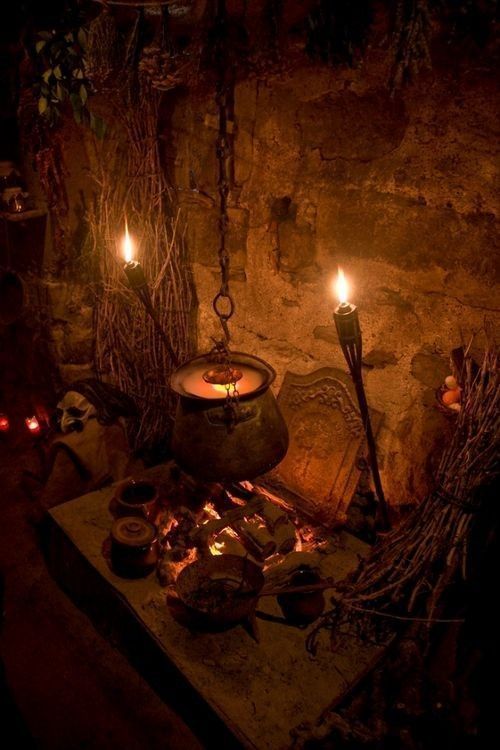
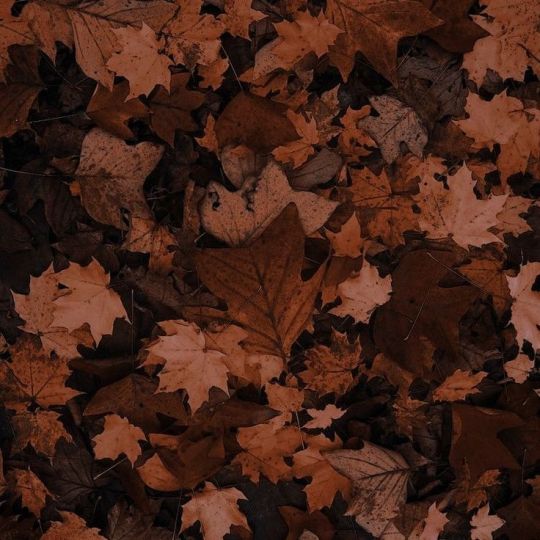
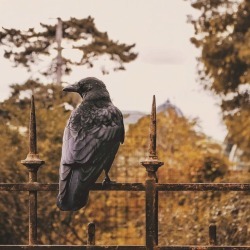

preparing for samhain
#samhain#halloween aesthetic#cosy aesthetic#warmcore#cosycore#autumn#celtic#celtic paganism#paganism#paganblr#witchcraft#witchblr#beginner pagan#halloween#fall aesthetic
488 notes
·
View notes
Text
Important Facts about Samhain from an Irish Celtic Reconstructionist
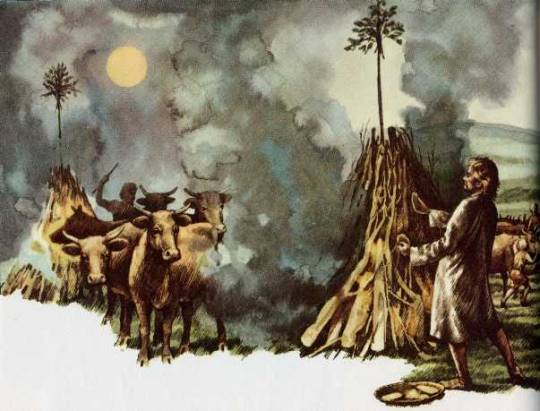
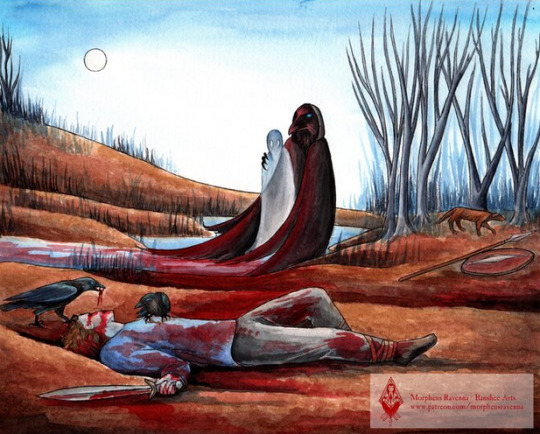

Pronunciation
SOW-in or SOW-een ~NOT~ Sam-han, Sam-win etc.
Dates
Most reconstructionists celebrate Samhain on Oct 31-Nov 1, however some may choose to celebrate on Gregorian Nov 13-14 as this would match the Julian dates of Oct 31-Nov 1. Some also believe that it was a three day festival spanning Oct 31- Nov 2 on which Nov 2 is specifically devoted to ancestral veneration, but there is no specific evidence of this, only possible extrapolation from more modern practices.
Following the Celtic method of days beginning at sunset, regardless of the specific dates you choose to celebrate on your festivities should begin at sunset and end at sunset.
Importance in the Mythos
Ná Morrighan has a strong connection to this time of year thanks to the story of Cath Dédenach Maige Tuired (The Last Battle of Mag Tuired) in which she is found depicted as the ‘Washing Woman’ (sometimes washing herself in the river and other times washing the bloodied armor of the soldiers that would die that day), on the eve of the battle which is also Samhain. The Dagda approaches her and couples with her (creating the ‘Bed of the Couples’ along the bank of river and granting Dagda her blessing in the battle to come). This encounter seems to over emphasize the liminality of the encounter by taking place during the changing of the year and with the couple each standing with ‘one foot on either bank’ of the river.
She and her sisters (Badb and Macha) then use various forms of magic to rain destruction on their enemies (in the form of fire and blood). After the day is won Morrighan speaks a prophecy that describes what is taken by some to be the end of days and others to be the events which will later lead to the Ulster Cycle.
Beneath the peaceful heavens lies the land.
It rests beneath the bowl of the bright sky.
The land lies, itself a dish, a cup of honeyed strength, there, for the taking, offering strength to each
There it lies, the splendour of the land.
The land is like a mead worth the brewing, worth the drinking.
It stores for us the gifts of summer even in winter.
It protects and armours us, a spear upon a shield
Here we can make for ourselves strong places, the fist holding the shield
Here we can build safe places, our spear-bristling enclosures.
This is where we will turn the earth. This is where we will stay.
And here will our children live to the third of three generations
Here there will be a forest point of field fences
The horn counting of many cows
And the encircling of many fields
There will be sheltering trees
So fodderful of beech mast that the trees themselves will be weary with the weight.
In this land will come abundance bringing:
Wealth for our children
Every boy a warrior,
Every watch dog, warrior-fierce
The wood of every tree, spear-worthy
The fire from every stone a molten spear-stream
Every stone a firm foundation
Every field full of cows
Every cow calf-fertile
Our land shall be rich with banks in birdsong
Grey deer before Spring
And fruitful Autumns
The plain shall be thronged from the hills to the shore.
Full and fertile.
And as time runs its sharp and shadowy journey, this shall be true.
This shall be the story of the land and its people
We shall have peace beneath the heavens.
Forever
(based on the translation by Isolde Carmody)
It is also mentioned in Echtra Cormaic that on this festival every seven years the high king would host a feast, it was at this time new laws could be enacted. (but it seems that individual Tuathas or possibly kings of the individual providence may have done this for their territories at Lughnasadh).
It seems to be a time considered especially susceptible to (or of) great change as it is the time which the Tuatha de Danann win victory over the Formorians and take control of Ireland, the invasion of Ulster takes place at this time in Táin bo Cúailnge, in Aislinge Óengusa Óengus and his bride-to-be are changed from bird to human and eventually he claims kingship of Brú na Bóinne at this time of year.
Celebration Traditions
Samhain is the beginning of the “dark half” of the year and is widely regarded as the Insular Celtic equivalent of the New Year. The “dark half” of the year was a time for story telling, in fact in this half of the year after dark is considered the only acceptable time to tell stories from the mythological and Ulster cycle (the Fenian cycle being assumed to be no older than the 12th century based on linguistic dating). Traditionally anything that had not been harvested or gathered by the time of this festival was to be left, as it now belonged to the Fae (in some areas specifically the Púca).
This was also an important time for warding off ill luck in the coming year. Large bonfires would be built and as the cattle were driven back into the community from the pastures they would be walked between these bonfires as a method of purification (the reverse custom of Bealtaine where the livestock were walked between the fires on their way out to the summer pastures). Assumed ritualistic slaughter of some of the herd would follow (though this perhaps had the more practical purpose of thinning the herd before the winter and creating enough food for the feasting). In some areas the ashes from these fires would be worn, thrown or spread as a further way to ward off evil.
Homes would be ritualistically protected from the Aos Sí (Fae or ‘Spirits’) through methods such as offerings of food (generally leaving some of the feasting outside for them), carving turnips with scary faces to warn them off (we now tend to do this with gourds), and smoke cleansing the home (in Scottish saining) traditionally with juniper, but perhaps rowan or birch might be an acceptable alternative. It is likely these would be part of the components used in Samhain bonfires as well, for the same reason.
Lastly based on later traditions as well as links in the mythology this is a time where divination practices or those with the ‘second sight’ were regarded to be especially potent.
Art Credit @morpheus-ravenna
#samhain#irish#irish mythology#irish polytheism#irish paganism#celtic reconstructionism#celtic paganism#celtic polytheism#na morrigna#the morrígan#the dagda#fire festival#blackcrowing#Irish reconstructionist
446 notes
·
View notes
Text




Lucky enough to watch this beautiful show
#pagan witch#witchcraft#celtic paganism#witch community#celtic#magick#cernunnos#nature photography#photography#eclipse#sky#sun and moon show
169 notes
·
View notes
Text
fhsksvjags seeing people saying that the 'cryptids' of Europe are harmless and I'm 👁👄👁 are we talking about the same Europe
people on tiktok are trying so hard to convince u the fae are harmless but that's Victorian Propaganda and I stand by that
2K notes
·
View notes
Text
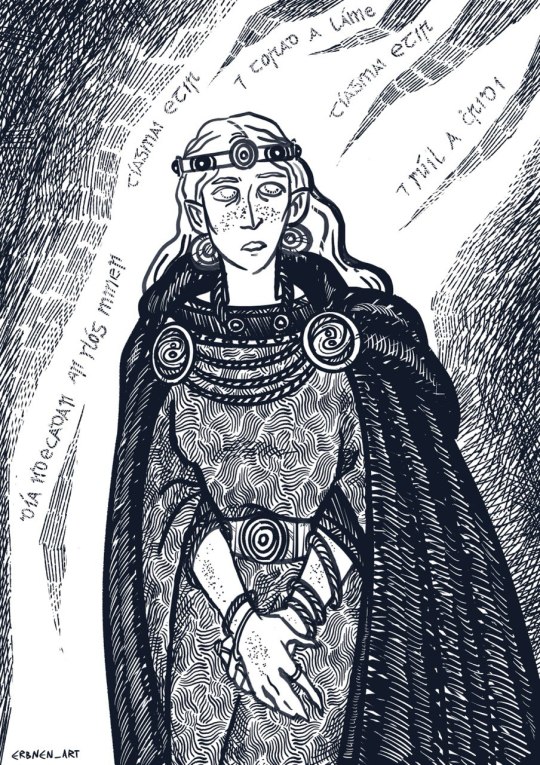
A commission of Brigid for @bloodtreachery (awww, it was SUCH a pleasure to do it!). I put an emphasis on her aspect as a poet, hence the fire of poetry ablaze!
The poem in the flames is a liberal translation of these lines from The Hosting of the Sidhe into Old Irish (courtesy of my wonderful husband):
...if any gaze on our rushing band,
We come between him and the deed of his hand,
We come between him and the hope of his heart.
#artists on tumblr#irish mythology#brighid#brigid#celtic paganism#gaelpol#paganblr#pagan art#illustration#commission#commissions open#tuatha de danann#irish goddesses#goddess brigid#druidism#celtic deities#aodhan erbnen
329 notes
·
View notes
Text
pro deity worship/low energy tip:
you CAN watch tv with/for your deities! and devote it to Them! and use that devoted time as an offering!
your offerings don’t exclusively HAVE to be physical or even only “things that would have been offered at the inception of the religion”. quality time is an offering. and TV (or movies!) can be quality time. as someone who is autistic/disabled, sometimes that’s all I can give (and I’m biased in that TV is my special interest, lol.)
examples:
for The Morrigan, I watch shows about killers, mediums, ghosts, and powerful groups of women. if I’m watching movies, I lean towards Irish horror movies or movies about spirits. sometimes just general dark fantasy movies. examples include Practical Magic (movie), The Hallow (movie), Hannibal (movie series or show but especially show), Psychic Kids* (reality show)
for Hermes, I watch things that are both funny and interesting/educational/informative. if I’m watching movies, I lean towards comedy romps (especially that involve travel) or biopics. examples include We Are The Millers (movie), Rocketman (biopic movie), Hart to Heart (comedy/interview show), Jeopardy!* (educational game show)
for Hades, I watch any and all horror movies, especially those with an afterlife component. if I’m watching shows, I tend to lean towards dark/kooky spooky cartoons. examples include Beetlejuice (movie or show but especially movie), The Cleansing Hour (movie), The Grim Adventures of Billy and Mandy (cartoon show), Courage the Cowardly Dog* (cartoon show)
for Persephone, I tend to watch anything old, spooky, heartfelt, and aesthetically beautiful. if I’m watching movies, I lean towards dark musical films or romantic movies with a horror twist (bonus points for horror, comedy, and romance all in one). examples include Deathgasm (movie), The Corpse Bride (cartoon musical movie), Elvira’s Movie Macabre (horror movie commentary show), The Munsters* (show)
I put a * next to the programs that I feel They’ve loved the most and have felt truly deep connection with Them over! please feel free to get weird with it, experiment, find what works for your worship. and maybe in the reblogs or tags, tell me what you’ve been watching and who you’ve been watching it with!
#the wolf speaks#paganblr#pagan#paganism#eclectic paganism#helpol#hellenic paganism#hellenic pagan#hellenic polytheism#polytheism#irish paganism#celtic paganism#irish pagan#celtic pagan#the morrigan#hades#persephone#hermes#the morrigan deity#hades deity#persephone deity#hermes deity
243 notes
·
View notes
Text
The Ultimate Deity Journal Guide
Similar to my grimoire guide, this is a guide on deity journals.
What Is A Deity Journal?
A deity journal is a journal dedicated to a deity. It’s filled with information, offerings, devotional pieces, etc. If you like journaling or can’t give other physical offerings (like food, libations, etc.), it’s one of the best offerings out there.
What Do I Use For It?
Usually deity journals are physical journals and notebooks. Binders and folders work as well. I have seen deity journals online, using things like Notion or Google Docs. Those are a little harder to format, but are great if you don’t have a notebook or aren’t a fan of physical journals.
So, What Do I Put In It?
Devotional Artwork
Devotional Playlists
Pressed/Dried Flowers or Herbs
Prayers
Devotional Poems or Stories
Myths
Recipes
Stickers
Experiences or Dreams
Photos
The Basics (Name, Epithets, Domains, Family, Associations, Holidays, Symbols, Sacred Days, Sacred Animals, Etc.)
Spells/Rituals That You Want To Or Have Done With Them
Offerings And Devotional Act Ideas
Journal Prompts
Magazine/Book Cutouts
Hymns
Shopping List (Things You Want To Buy For Them)
Fabric Scraps
Letters To Them
Divination Readings With Them
Coins Or Other Currencies
How You Celebrate (Or Plan To) Holidays Or Sacred Days With Them
UPGs
Altar Plans (Drawings Or Descriptions Of Altar Ideas)
Incense, Herb, And Oil Blends
Drops Of Wax, Wine, Etc.
Seed Packets
Blessings
Charms
Charm/Spell Bags
Travel Plans (Places You Want To Go For Your Deity)
Maps That Remind You of Them
Sigils Dedicates To Them
Superstitions Related To Them
Research On Their Birth Place
Devotional Jewelry Charging Station
Affirmations Dedicated/Influenced By Them
Small Sticks Or Branches
Book Annotations
Divination Techniques Related To Them
Relationship Goals (Better Communication, More Signs, Etc.)
Their Associated Rune/Tarot Card/Etc.
Teas And Tea Blends
Folklore/Mythology Entities Related To Them
Vision Board
Goals
Diary Entries And Rants
Taglocks
Paper/Straw/Etc. Dolls
Doodles
References/Further Reading
#deities#witchcraft#baby witch#beginner witch#witch#witchy#witchblr#helpol#hellenism#norse paganism#celtic paganism#slavic paganism#kemetism#kemeticism#Kemetic#hellenic#hellenic witch#deity#deity work#deity worship#worship#devotional act#offering#devotional journal#witches#witchery#devotion#deity devotion
740 notes
·
View notes
Photo
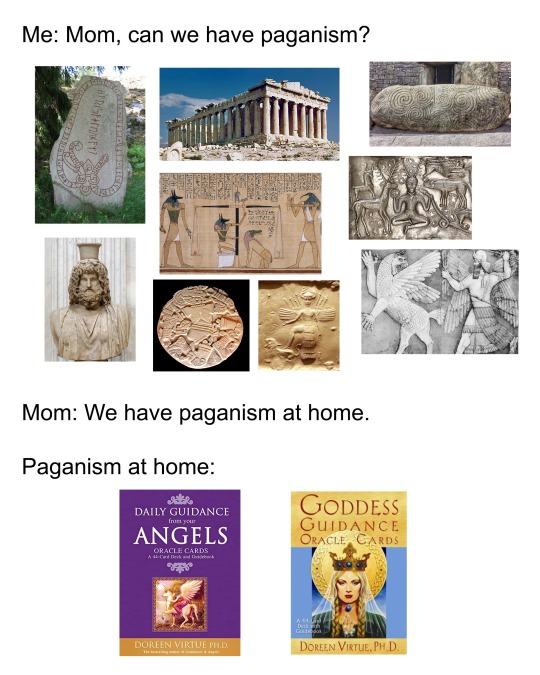
#pagan memes#paganism#neopaganism#memes#hellenic paganism#hellenic polytheism#helpol#norse paganism#asatru#egyptian paganism#kemeticism#mesopotamian mythology#sumerian#celtic paganism#doreen virtue
745 notes
·
View notes
Text
Paganism poll!
If you call your believes "a pagan religion", please vote down below! I'm making a little research for myself, results of which I will post on this blog.
I've made a similar Greek polytheism post!
To clarify, we're are not choosing just one option here! It is implied that nature worship is within the religion or practice regardless. It is the question of mindset of what you put first in your day-to-day worship, what do your festivals/holidays revolve around and such.
If you answer on the poll, please comment/tag your answer and the religion you follow/attribute yourself to!
Although it is not necessarily required for the research I'm doing, that will allow me to do more specific attributions of what religions do people call pagan and what's their actual central part of worship!
Huge thanks to anyone who votes!
Please reblog for a bigger sample size!
#hellenic polytheism#hellenic paganism#norse paganism#norse polytheism#slavic paganism#kemetic paganism#kemeticism#kemetic polytheism#roman polytheism#roman pagan#celtic paganism#helpol#hellenic pagan#hellenic polythiest#morsel:orig#morsel:helpol
132 notes
·
View notes
Text
I love that Celtic mythology and paganism are open but I implore people to pleeeease learn from actual Irish people teaching the culture and remember that these are still indigenous practices that have been nearly erased by colonialism.
#witchblr#witches of tumblr#witchcraft#witch community#pagan#paganism#neo pagan#celtic paganism#irish paganism
224 notes
·
View notes